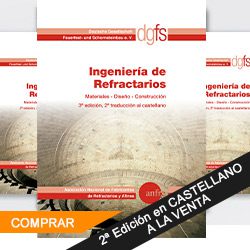Delegates at this year’s MagMin2016 were told that there were opportunities for growth for refractories producers in the glass market.
Delegates at this year’s MagMin 2016 were told that there were opportunities for growth for refractories producers in the glass market.
Addressing the conference, which this year was held in Dusseldorf, Fabrice Rivet, technical director of the European Container Glass Federation, said that the glass industry was «doing well despite the economic context (…) and remains a solid industry with good customer prospects».
To produce glass, manufacturers have to fire the raw materials (which include silica sand, soda ash, and borates) in large kilns, lined with refractory bricks that are, on average, replaced every 15 years.
Trends in the glass industry therefore impact refractory producers.
In Europe today there are 160 glass manufacturing plants with an average of two furnaces per plant. For now, these are mainly gas-fired plants but Rivet hedged that soon these will be replaced by electric furnaces and furnaces that allow more flexibility.
Rivet underlined that competition from alternative materials abounds, with developments noted in fluorescent coated glass and VersaFlow – both new concepts in glass that have developed over the last five years. As well as this, the move towards decarbonisation poses the same challenges for the glass market as it does the refractories market, Rivet noted.
Challenges
Rivet pointed to challenges such as slow growth, unemployment and evolving consumer patterns as affecting the glass market but underlined that the glass industry still held many strong points.
«Glass remains a premium packaging material across all consumer spaces, from fast moving consumer goods to luxury beverages. It constitutes an excellent barrier to contamination, and offers low transmission of oxygen and water vapour,» Rivet explained.
«Glass is also highly inert: it doesn’t leach into nor react with food and beverage it contains. It is the only packaging with no plastic layer, and is highly recyclable and recycled, with no loss of properties,» he added.



